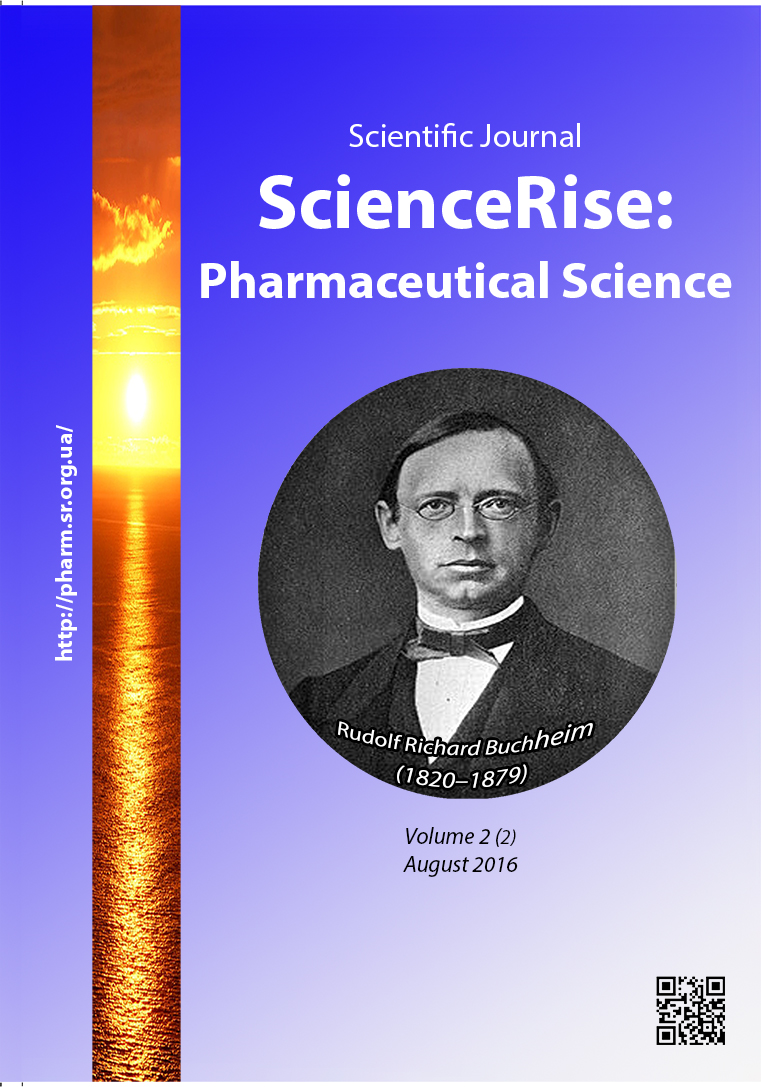Study of the thermogravimetric analysis application to determine volatile impurities for the reference standards certification
DOI:
https://doi.org/10.15587/2519-4852.2016.74460Keywords:
reference standards, certification, volatile impurities, thermogravimetric analysis, measurement uncertaintyAbstract
Aim. To study thermal gravimetric analysis (TGA) application for the reference standards certification, considering the uncertainty metrological concept of the State Pharmacopoeia of Ukraine.
Methods. Thermogravimetric analysis, mathematical statistics methods.
Results. TGA application to determine volatile impurities for the reference standards certification was studied, considering the requirements for making the reliable conclusion about quality of medicines (95 %). Requirements to the volatile impurities content uncertainty were formulated. It has been found, that measurement uncertainty evaluation for the volatile impurities determination, using TGA method, meets the strictest requirements for the pharmaceutical reference standards certification.
Conclusion. It has been shown, that TGA method allows the use of minimum weighed portions, typical for pharmaceutical analysis practice: 10 mg for quantitative determination, 5 mg or less for purity tests, 10 mg for homogeneity tests, which is the strictest requirement for pharmaceutical reference standards
References
- Nogueira, R., Queiroz, S. M., Silva, G. E. B., Rocha, W. F. C., Sarmanho, G. F., Almeida, R. R. R., Moreira, G. F. (2012). Determination of volatiles in pharmaceutical certified reference materials. Journal of the Brazilian Chemical Society, 23 (9), 1636–1646. doi: 10.1590/s0103-50532012005000021
- Derzhavna Farmakopeja Ukrai'ny. Vol. 1 (2015). Kharkiv: Derzhavne pidpryjemstvo «Ukrai'ns'kyj naukovyj farmakopejnyj centr jakosti likars'kyh zasobiv», 1128.
- ISO Guide 34:2009(E): General requirements for the competence of reference material producers (2009). Geneva: International Organization for Standardization. ISO copyright office, 34.
- Leontiev, D. A.; V. P. Georgievskii (Ed.) (2012). Farmacevticheskie standartnye obrazcy. Analiticheskaya himiya v sozdanii, standartizacii i kontrole kachestva lekarstvennyh sredstv. Kharkiv: NTMT, 1064–1118.
- ICH Harmonised Tripartite Guideline: Quality Risk Management (Q 9). Current Step 4 version. (2005). The International Conference on Harmonisation of Technical Requirements for Registration of Pharmaceuticals for Human Use (ICH), 19.
- Leontiev, D. A., Volovyk, N. V., Gryzodoub, A. I. (2015). Sistema farmakopejnyh standartnyh obrazcov Gosudarstvennoj Farmakopei Ukrainy: koncepciya sozdaniya i tekushchee sostoyanie. Farmacevticheskij zhurnal (Kazakhstan), 2, 29–37.
- ISO Guide 35:2006: Reference materials – general and statistical principles for certification (2006). Geneva: International Organization for Standardization. ISO copyright office, 65.
- The United States Pharmacopoeia. USP 39–NF 34. Rockville: The United States Pharmacopeial Convention. Available at: http://www.uspnf.com
- European Pharmacopoeia (2015). Strasbourg: European Department for the Quality of Medicines.
- Leontiev, D. A., Gryzodoub, A. I., Levin, M. G., Docenko, T. N. (2002). Attestaciya farmacevticheskih standartnyh obrazcov: izuchenie odnorodnosti. Farmakom, 3, 104–116.
- Leontiev, D. A. (2016) Stvorennya sistemi farmacevtichnih standartnih zrazkіv v Ukrai'nі. Kharkiv, 42.
- Doehrfel', K. (1994). Statistika v analiticheskoj himii. Мoscow: Mir, 268.
Downloads
Published
How to Cite
Issue
Section
License
Copyright (c) 2016 Дмитрий Анатольевич Леонтьев, Наталья Валерьевна Воловик, Елена Валерьевна Бевз, Ольга Валерьевна Ващенко, Лилия Владимировна Будянская

This work is licensed under a Creative Commons Attribution 4.0 International License.
Our journal abides by the Creative Commons CC BY copyright rights and permissions for open access journals.








